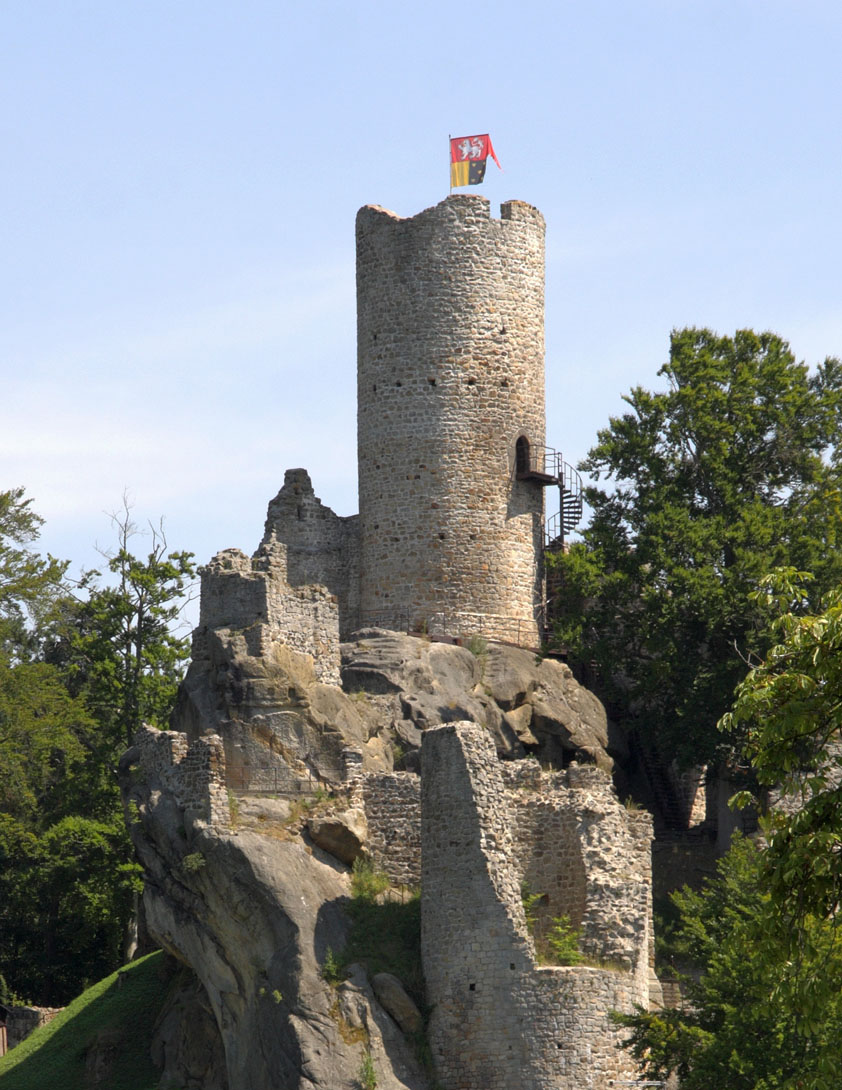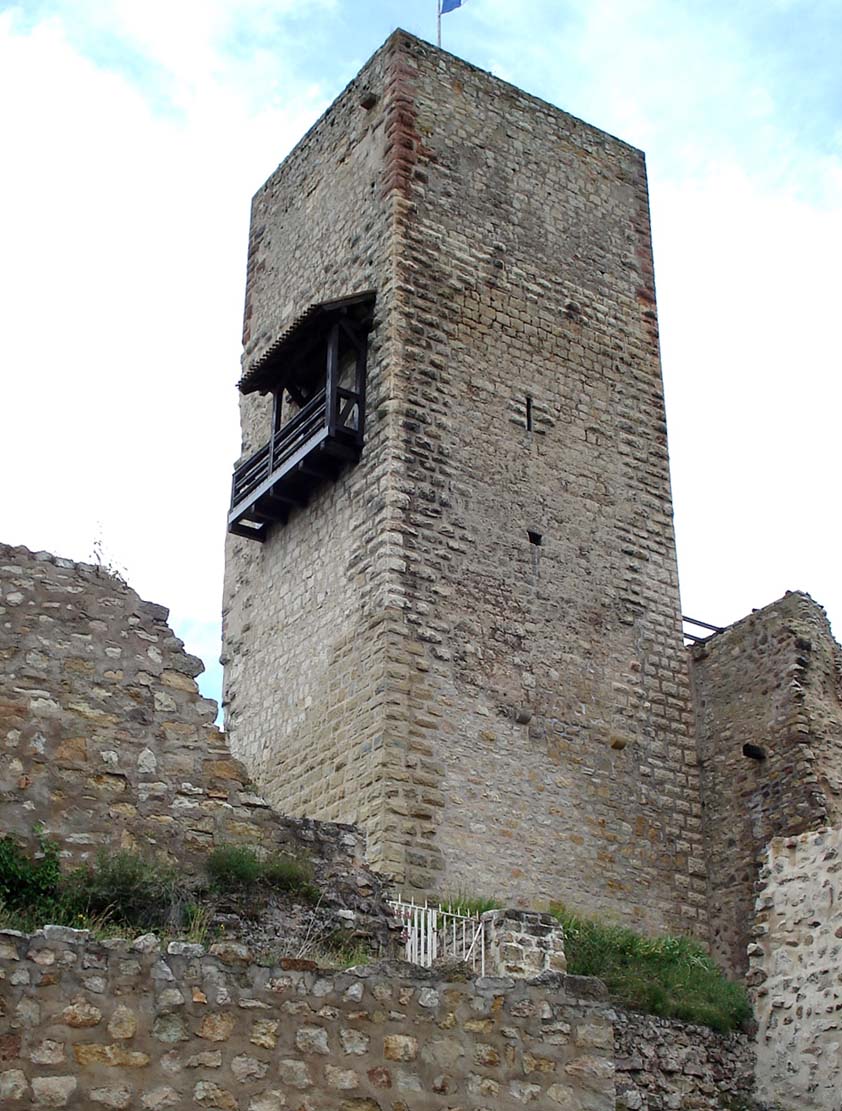In medieval fortresses one of the terms referring to the freestanding tower of the watchtower or refugial type. Also called the ultimate defense tower or stołp. They first appeared in France in the twelfth century and from there they spread in the first half of the 13th century to the German states. Initially, the bergfrieds were free-standing and were designed for passive defense, with time they were incorporated into the defensive circuit of the castle and provided with elements that increased the ability of active defense. It were the ultimate defence places. The lower part of the inside of the tower was vaulted, usually intended for a prison, only available from the top. The entrance to the tower was placed quite high, it was only accessible by a ladder, timber stairs or a footbridge from the crown of neighboring defensive walls, which could be quickly destroyed in the event of an attack. As the bergfrieds moved more and more outside the lines of the walls, along with the evolution of the fortification art, it were displaced by flanking towers. Bergfrieds are often confused with the keeps, from which they originate, but are not identical with them, because they were not used to permanent residence.




